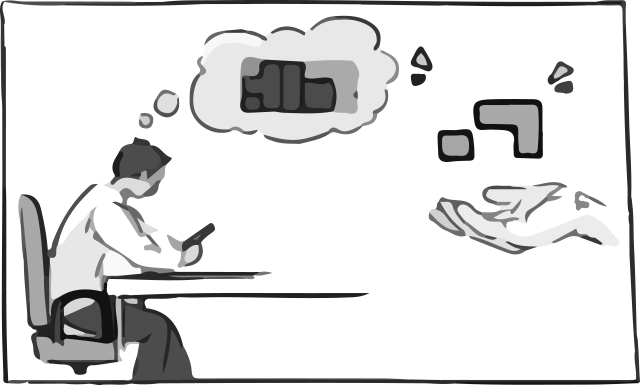Participatory Design (in its origins
also called co-operative design) is a relatively new approach to designing
products. It successfully involves the stakeholders, designers, researches and
end-users in the design process in order to help ensure that the end product
meets the needs of its intended user base.
Participatory Design exercises are used in a variety of fields,
such as software and product design, urban design, architecture, graphic design
and even medicine.
Up until recently, majority of
consumers believed they were not being designed “for” by the companies they
bought their products from, but rather designed “at” and forced to adapt to the
ideas and principles that weren’t intuitive to them. In order to fix this,
Participatory Design was a creative invention which aimed to actively include
the end users into the design process.
As
opposed to empathic design, in which
researches and developers move into the world of end-users, Participatory
Design can be seen as relocating end-users into the world of research and
development.
It is important to note that, while
the users are a valuable source of information and ideas in Participatory
Design, they are not allowed to make end decisions and are never empowered with
the tools that the experts use. Participatory Design sessions are simple
exercises in which we give our users the tools to create and design mockups of
software or products they would love to use in the “perfect world” scenario,
while also asking them to explain why they built their perfect software or a
product in that particular way.
From observing their building process and listening to their explanations on why they built something in this or that way, we learn a lot of the things we wouldn’t through a mere interview with the user.
From observing their building process and listening to their explanations on why they built something in this or that way, we learn a lot of the things we wouldn’t through a mere interview with the user.
When should you run a Participatory Design
session?
- · When you want to better understand how people think about a given problem, discipline or a technology, run a Participatory Design session.
- · When you have a feeling that what the users say they do and what they actually do are not the same, run a Participatory Design session.
- · When you feel like there is, or could be, any cultural or political disconnect between you and the end user, a technique such as this might be the best way for you to observe and learn from the user.
The tools
At this point, you might be thinking
to yourself, “A Participatory Design session sounds great! I want to conduct
one, but which tools do I need?” You will be happy to find that
nothing is set in stone when it comes to the tools you should use in
Participatory Design sessions.
…Unless you want to provide your participants with stone blocks and rocks,
which is totally fine, and sounds like a great idea!
Depending on what you are designing,
tools for the session can be anything. If you are working on designing a
product or an environment, you might want to use wooden bricks, Legos,
plasticine, pieces of rope, maps and so on. Even post-it notes can be used
successfully and in a variety of different ways.
One of the great things about Participatory Design exercises is
that the only limitation when it comes to the tools used is your imagination.
If you are designing software, you
might decide to stick to pen and paper. (Or a whiteboard!) You could create
blank versions of different device screens and ask participants to draw out the
UI. You could provide the participants with cut out icons and boxes which they
can arrange to their liking and according to their needs, all the while
explaining why they put something in one place instead of the other.
DISCLOSURE: This post may contain affiliate links, meaning when you click the links and make a purchase, we receive a commission.
By letting the participants show us
what matters to them, as opposed to telling us, we are getting more specific
and more honest data out of the session.
In conclusion
A Participatory Design Session is a
great opportunity for designers and researchers to meet and identify with the
end-user. The user is invited to enter the creative process and by listening to
them we can avoid making mistakes we are often tempted to make as a result of
designing for ourselves instead of designing for the user.It is important to try and keep the
tools used as simplistic as possible. Don’t let the tools you use overshadow
the message your participants are trying to get across. Ask a lot of questions,
and as with any usability research technique, make sure to spend the most of
the session closely observing your participants.
References : View Original link to article
About Author:
Ines Anić (@i_anic) is a Content and Administrative Associate at UX Passion, where she writes about UX, UI, design and social media management. She is passionate about UX, Usability, design and video games; and curious about technology, gadgets, IT and the world of startups. Ines is looking forward to connecting with you on LinkedIn and Twitter!








%20in%20India.png)

